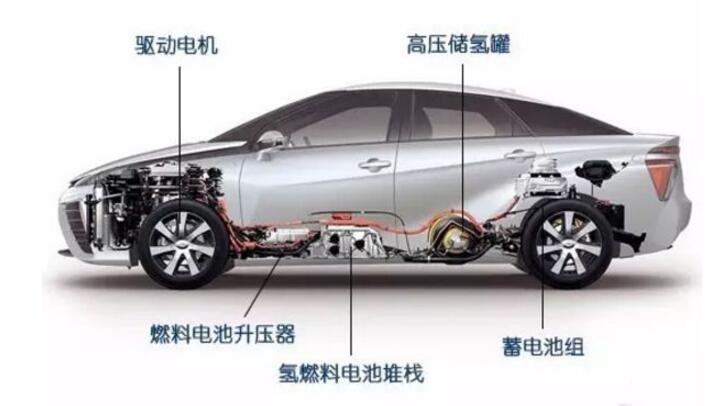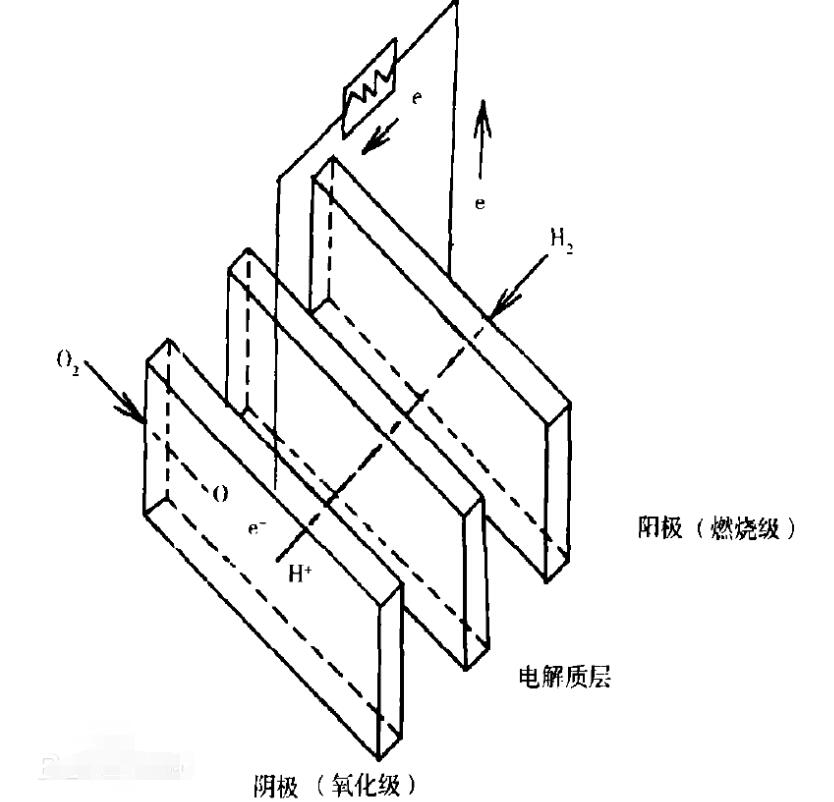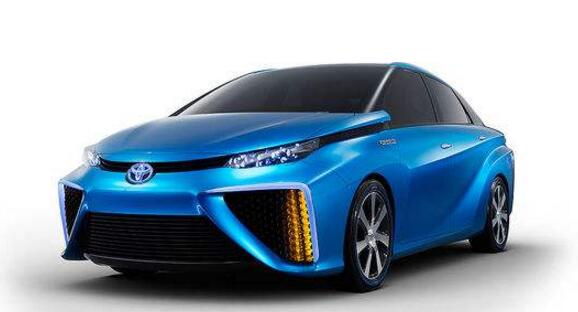What are the fuel cell vehicles? _ fuel cell vehicle classification _ fuel cell vehicle advantages and disadvantages
A fuel cell vehicle (FCV) is a vehicle powered by electric power generated by an on-board fuel cell device. The fuel used in the on-vehicle fuel cell device is a high-hydrogen reformed gas obtained by reforming high-purity hydrogen or a hydrogen-containing fuel. The difference in power compared to a conventional electric vehicle is that the electric power for the FCV comes from the on-board fuel cell device, and the electric power used for the electric vehicle comes from the battery that is charged by the electric grid. Therefore, the key to FCV is fuel cells.
A fuel cell is a high-efficiency power generation device that directly converts the chemical energy of a fuel into electrical energy by electrochemical reaction without burning fuel. The basic principle of power generation is: the anode (fuel electrode) of the battery is input with hydrogen (fuel), and the hydrogen molecule (H2) is dissociated into hydrogen ions (H+) and electrons (e-) under the action of the anode catalyst, and H+ passes through the fuel cell. The electrolyte layer moves toward the cathode (oxidation pole), e- flows from the external circuit to the cathode because it does not pass through the electrolyte layer; oxygen (O2) is input to the cathode of the battery, and oxygen dissociates into oxygen atoms (O) under the action of the cathode catalyst, and The e-phase flowing to the cathode through the external circuit and the H+ combination of the fuel passing through the electrolyte form a stable structure of water (H2O), and the electrochemical reaction is completed to release heat. This electrochemical reaction is completely different from the intense combustion reaction of hydrogen in oxygen. As long as the anode continuously inputs hydrogen and the cathode continuously inputs oxygen, the electrochemical reaction will continue continuously, and e- will continue to pass through external circuits. The flow forms a current that continuously supplies power to the car. The principle of rotary mechanical power generation, which is similar to the traditional electric conductor cutting magnetic lines of force, is a static power generation method that obtains electric power without object motion. Therefore, the fuel cell has the advantages of high efficiency, low noise, and no pollutant discharge, which ensures that the FCV becomes a highly efficient and clean car in the true sense.

In order to meet the requirements of automotive use, fuel cells for vehicles must also have high specific energy, low operating temperature, fast start-up, and no leakage. Among many types of fuel cells, proton exchange membrane fuel cells (PEMFC) fully possess these characteristics. Therefore, the fuel cells used by the FCV are all PEMFCs.
The working principle of a fuel cell vehicle is that hydrogen as a fuel undergoes a redox chemical reaction with oxygen in the atmosphere in a fuel cell equipped with an automobile, and generates electric energy to drive the motor to work, and the motor drives the mechanical transmission structure in the automobile, and further Drive the mechanical structure of the front axle (or rear axle) of the car to drive the electric car forward.
7 core components fuel cell. The fuel cell reaction results in very little carbon dioxide and nitrogen oxides, and by-products mainly produce water, so it is called a green new environmentally friendly car. A fuel cell vehicle is a type of electric vehicle whose core component is a fuel cell. Through the chemical action of hydrogen and oxygen, rather than through combustion, it directly becomes electric power.
Hydrogen fuel for fuel cell vehicles can be obtained in several ways. Some vehicles carry pure hydrogen fuel directly, while others may have fuel reformers that convert hydrocarbon fuels into hydrogen-rich gases. A single fuel cell must be combined into a fuel cell stack to obtain the necessary power to meet the requirements of the vehicle. The following figure shows a schematic diagram of the fuel cell body of a fuel cell vehicle.

Compared with traditional vehicles, the difference between fuel cell vehicles and traditional internal combustion engine driven vehicles in terms of construction and power transmission has put forward new requirements for the overall design of automobiles. The engine of a conventional internal combustion engine vehicle----the transmission powertrain no longer exists in fuel cell vehicles, and is replaced by fuel cell reactors, batteries, hydrogen tanks, electric motors, DC/DC converters and the like. The brake system and suspension also change accordingly. Therefore, according to the characteristics of the fuel cell vehicle, corresponding changes and improvements should be made during the design. Fuel cell vehicles have the following advantages:
1. Zero or near zero emissions.
2. Reduce water pollution caused by oil leakage.
3. Reduce greenhouse gas emissions.
4. Improve fuel economy.
5. Improve engine combustion efficiency.
6, stable operation, no noise.
The characteristics of fuel cell vehicles are as follows:
Fuel cell vehicle chassis layout
The fuel cell powertrain includes: a hydrogen tank assembly, a battery assembly, a fuel cell stack assembly, a power take-off system assembly, and the like. Among them, the hydrogen storage tank is generally placed in the middle of the chassis, or the space below the rear seat (the tank position of a conventional internal combustion engine car), and the hydrogen tank is dispersed and stored. In addition to the fuel cell powertrain, the vehicle brake assembly, front and rear suspension assemblies and tires should also be adjusted and tested accordingly. Especially with the development of hub motor technology, fuel cell vehicles have a new choice in the placement of electric motors, increasing the interior space of the car. The driving force of each electric wheel can also be directly controlled to improve the performance of the car under bad road conditions. The chassis layout should distribute the majority of the load evenly at the front and rear ends of the chassis, reducing the overall center of gravity of the vehicle, making the car have good handling performance and improving the overall safety of the vehicle.
Fuel cell vehicle management system
The power system of a fuel cell vehicle generally consists of a proton exchange membrane fuel cell, a battery, a motor, and a system control device. The electric energy generated by the fuel cell is converted by a DC/DC converter, a DC/AC inverter, etc., to drive the operation of the motor, and convert the electric energy into mechanical energy to provide power for the automobile. In some key components, such as proton exchange membrane fuel cells and batteries, its thermal characteristics and heat transfer properties are very different from those of traditional vehicles, which poses new goals and requirements for water and heat management of fuel cell vehicles.
Fuel cell vehicle electronic control
Like traditional cars, electronic control will play an increasingly important role in the development of fuel cell vehicles. The various control systems of the car will develop in the direction of electronic and electrified, achieving "line control", that is, replacing the mechanical transmission mechanism with wires, such as "wire brake", "wire steering", etc.; existing 12V power supply Can not meet the needs of all electrical systems on the car, the implementation of the new standard for 42V automotive electrical systems will make automotive electrical appliances zero
Significant changes have taken place in the design and construction of components, and mechanical relays and fuse-protected circuits will be eliminated. At the same time, the characteristics of fuel cells have their own characteristics:
a. low voltage, large current;
b. The output current will increase with the increase of temperature, and the output voltage will decrease as the output current increases.
c. From the start of output voltage and current to gradually entering a steady state, the dynamic reaction time staying in the transition zone is longer. Due to the above characteristics, most electrical appliances and motors are difficult to adapt to their voltage characteristics, so they must be used in conjunction with DC/DC converters and DC/AC inverters. A large amount of power regulation is required for the fuel cell system to ensure voltage stability. .
(1) When the output power of the fuel cell is greater than the needs of the vehicle, the excess power can charge the battery, and the battery can supply power to the auxiliary system when the power system is started;
(2) When the power of the fuel cell cannot meet the acceleration and climb of the car, the battery can provide additional power and cooperate with the fuel cell.
Therefore, the vehicle can independently supply power to various electronic and electrical devices with an auxiliary power of 42V. Since fuel cell vehicles have a fundamental difference in driving methods compared to conventional internal combustion engines, the design of chassis layout, hydrothermal management, and electronic control is also very different.
A fuel cell vehicle is a type of electric vehicle whose energy is directly converted into electrical energy through the chemical action of hydrogen and oxygen rather than through combustion. The chemical reaction process of the fuel cell does not produce harmful products. Therefore, the fuel cell vehicle is a pollution-free automobile. The energy conversion efficiency of the fuel cell is 2 to 3 times higher than that of the internal combustion engine. Therefore, in terms of energy utilization and environmental protection, the fuel cell vehicle is An ideal vehicle.


Whaylan Portable Energy Storage power is lightweight,compact, and easy to carry. It also fits with common camping appliances and can charge your equipment at any time. With its pure sine wave and no damage to appliances, it has always been the first choice for backcountry campers.
300W Power station,300wh power station,portable power station,the power station
suzhou whaylan new energy technology co., ltd , https://www.whaylan.com